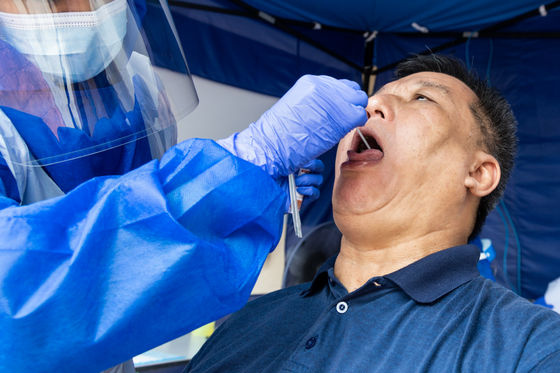The Delta strain of the new corona was found to be 'more likely to spread the virus before the onset' than the conventional strain, and the effect of the vaccine is shown again.

Past studies have shown that the delta strain of the new coronavirus '
Transmission dynamics and epidemiological characteristics of Delta variant infections in China | medRxiv
https://www.medrxiv.org/content/10.1101/2021.08.12.21261991v1.full
Delta's rise is fuelled by rampant spread from people who feel fine
https://doi.org/10.1038/d41586-021-02259-2
A research team led by epidemiologist Benjamin Cowling of the University of Hong Kong and others will investigate the spread and epidemiological characteristics of the delta strain that occurred in southern China from May to June 2021 in Guangdong Province. We analyzed test data from 101 people infected with the delta strain of the virus.

As a result of the analysis, the incubation period from infection with the Delta strain to the onset of symptoms was 5.8 days on average, whereas the incubation period before the infected person tested positive for the virus was There was an average of 4 days and 1.8 days. This means that 'people infected with the Delta strain had shed virus particles for two days before symptoms appeared.'
The study also found that 'people infected with the Delta strain have higher levels of viral particles in their bodies than people infected with the conventional strain,' and '73.9% of Delta strain infections are caused by presymptomatic infected individuals.' It was also understood. 'The findings show why the Delta strain has become the world's predominant strain, overwhelming conventional and other mutant strains,' said Burnaby Young, an infectious disease clinician at the Singapore National Center for Infectious Diseases. It will be a proof. '

In addition, Cowling et al. Calculated the basic reproduction number (R0) of Delta strains, and the value was 6.4. R0 is the average number of people who spread the virus in a population that is susceptible to an infectious disease.
'The R0 of the Delta strain is 6.4, well above the conventional estimate of 2-4, which means that the Delta strain is traditional,' said Maam Kilpatrick, an infectious disease researcher at the University of California, Santa Cruz. It's just a little faster than the strain, but it's much more infectious. '
While the study shows the violence of the Delta strain more clearly, it also reaffirms the effectiveness of the vaccine. Those who received two inactivated vaccinations with the new coronavirus had lower peak virus levels and a 65% lower chance of infecting others when infected with the Delta strain.
From this, the research team stated in the treatise, 'Inactivated vaccines are considered to be effective in reducing infection with Delta strains, so in order to mitigate the threat of pandemics, we will pursue high vaccination rates. We need to. '
Related Posts:
in Science, Posted by log1l_ks







